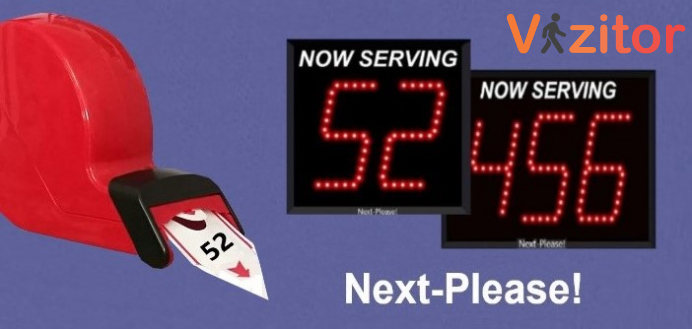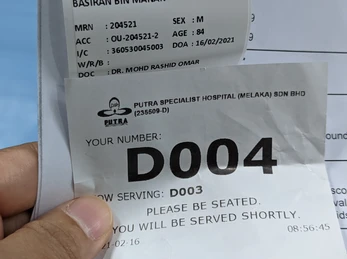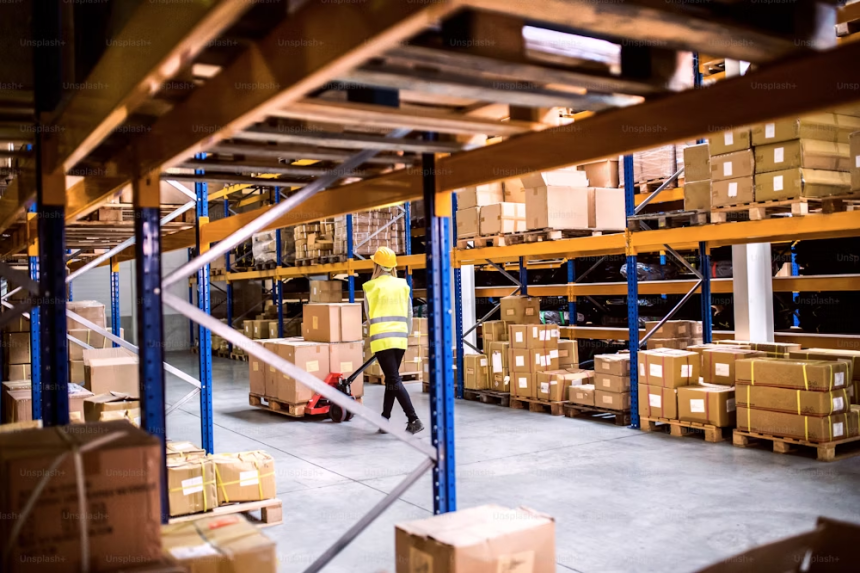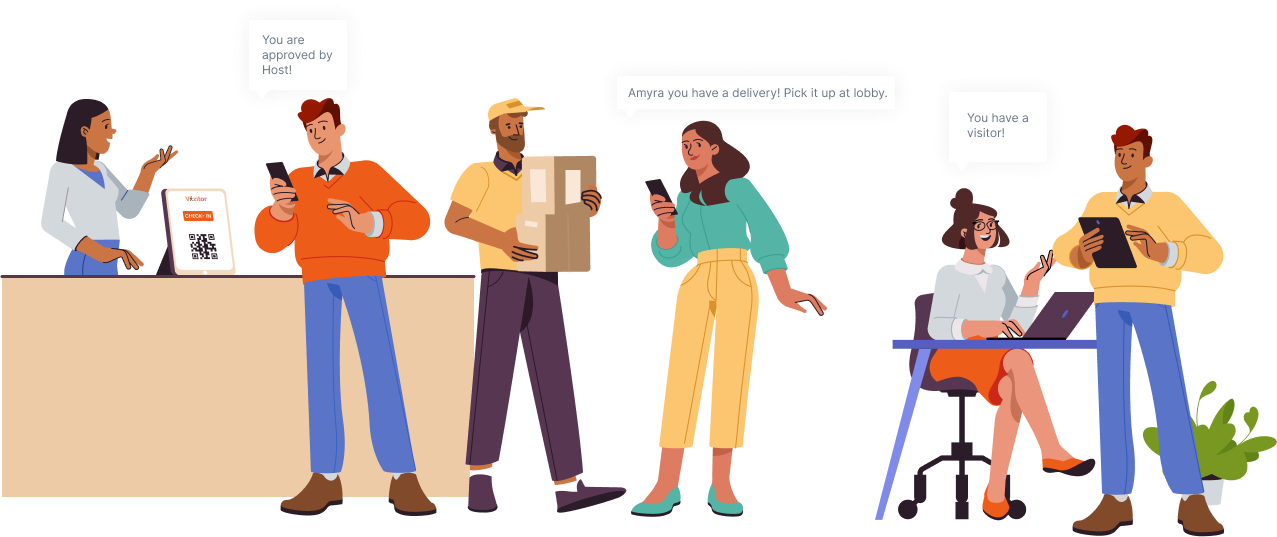Table of Content
Try Vizitor for Free!

Wed, Dec 18, 2024
Read in 9 minutes
Imagine this: It’s a busy day at a hospital reception, and patients are handed paper tickets from a take-a-number machine.
The waiting area is crowded, anxiety grows with every passing minute, and there’s no way for patients to know when their turn will come.
This outdated scenario, common in healthcare, retail, and government offices, is a prime example of how traditional take-a-number systems fail to meet the expectations of modern customers.
Traditional take-a-number systems have served businesses for years, managing queues with physical tickets and number displays.
With the rise of technology and changing customer expectations, businesses need smarter solutions that go beyond the traditional take-a-number queue system or ticket dispenser machine.
Studies show that 73% of customers feel frustrated with long waiting times, and 33% abandon services entirely when faced with poor queue management.
Such scenarios are a significant loss for businesses that aim to retain customers and build brand loyalty.
In this post, we’ll explore why upgrading to modern alternatives to take-a-number systems is a business necessity today.
What is a Take-a-Number System in Queue Management?
A take-a-number system is a traditional queue management method used to organize customers in sequential order. Customers take a numbered ticket or token from a take-a-number machine or ticket dispenser, and staff serve them based on the displayed order.
This system was designed to reduce confusion in busy environments such as banks, hospitals, and retail stores.
Here’s how these systems enhance queue management process at Workplaces:
Orderly Flow of Customers
The primary function of a take-a-number queue system is to create a structured flow by assigning numbers to customers as they enter.
This prevents confusion and ensures that each customer is served in the order they arrived, promoting fairness and transparency.
Efficient Staff Management
Staff can focus on serving customers without worrying about who should be next.
Since the ticket dispenser machine issues numbers or tokens sequentially, employees can work more efficiently, ensuring that they serve customers promptly without missing anyone.
Scalability
In busy environments, like government offices or hospitals, a take-a-number system allows businesses to handle large volumes of people efficiently without crowding.
It’s easy to scale this system to handle different service counters or branches.
Reduces Customer Anxiety
By clearly displaying the number of customers ahead, the system helps customers understand where they are in the queue, reducing frustration and anxiety while they wait.
Problems with the Traditional Take-a-Number System

While the take-a-number system has served its purpose for years in enhancing the queue management process at different industries, it comes with several challenges that can lead to customer dissatisfaction and operational inefficiencies.
Here are the key problems with traditional take-a-number machines:
Poor Customer Experience
• Customers are often left waiting with no real-time updates, leading to frustration.
• No interaction or personalization makes the process feel outdated.
• Customers can’t track how many people are ahead of them or know if their turn is coming soon.
• Unlike digital solutions that offer real-time tracking on mobile apps or screens, this lack of transparency leaves customers anxious and dissatisfied, leading to an overall poor experience.
• The traditional system lacks flexibility. For example, if a customer needs to step away for a few minutes, they may miss their turn, leading to frustration and potentially long delays when they return.
Crowded Waiting Areas
Traditional systems require customers to stay in a physical waiting area until their number is called.
• Large groups of customers waiting for their number to be called lead to chaos and discomfort.
• With customers clustered in one space, they’re not able to engage in other activities, such as shopping or exploring additional services. Businesses lose out on potential sales or opportunities for cross-selling or upselling.
High Maintenance Costs
• The physical machines require regular upkeep, such as replacing paper rolls or fixing mechanical issues.
• If a ticket dispenser machine breaks down, the entire system can fail, leading to delays, confusion, and customer dissatisfaction.
• Traditional systems can’t automatically adjust to urgent cases or prioritize customers based on urgency or need.
No flexibility
• Traditional take-a-number systems are static and don’t suit the system during increase in demand or dynamic changes in service delivery.
• In environments where service demand is highly variable (e.g., hospitals, customer service centers), the traditional take-a-number system struggles to adapt.
• Since the traditional system does not track service levels or wait times, businesses can struggle to manage staff appropriately.
Why Businesses Should Upgrade to modern alternatives?
Adopting modern alternatives to traditional ticket dispenser machines and take-a-number queue systems is not just a technological upgrade but a crucial move to meet customer expectations.
The era of traditional take-a-number systems is rapidly fading. With customer expectations evolving and technology advancing, businesses that fail to upgrade risk losing customers to competitors offering smoother, faster, and more satisfying experiences.
In an age where 73% of customers say waiting in line negatively affects their experience, businesses can no longer afford to rely on inefficient, paper-based systems.
Modern queue management systems are not just an investment in technology—they’re an investment in customer satisfaction, operational efficiency, and long-term growth. By adopting these solutions, businesses can build loyalty, enhance their reputation, and ensure success in a Competitive world.
Top Modern Alternatives to Traditional Take-a-Number Systems
To address these queue management challenges, here are the top modern alternatives to traditional take-a-number systems, meeting both customer and business needs:
Virtual Queue Management
A digital solution that allows customers to join a queue remotely using their smartphones, web portals, or apps.
Benefits:
• Eliminates physical waiting areas.
• Customers receive real-time updates about their queue status.
• Businesses gain insights into customer flow and peak hours.
A retail chain implementing a virtual queuing system can reduce wait times by 30% and increase customer satisfaction by 40%.
Unlike traditional ticket dispenser machines that require customers to wait in physical queues, modern Queue Management Systems like Vizitor offers a virtual queue system.
Customers can join the queue remotely via their mobile phones, tablets, or computers, eliminating the need to stand in long lines. This allows them to continue with other activities while waiting for their turn, improving convenience and reducing frustration.
Self-Service Kiosks
Digital kiosks at entry points allow customers to check in and select their service preferences.Unlike static ticket dispenser machines, kiosks offer real-time updates, allow customers to join virtual queues, and provide a contactless, hygienic experience.
Key Features:
• Speeds up the check-in process.
• Beyond ticket issuance, kiosks handle tasks like booking appointments, managing payments, and providing service information—all in one place.
• Improves the customer experience by offering a user-friendly interface.
• By automating processes, kiosks help businesses minimize operational delays, reduce paper waste, and cut staffing costs.
Vizitor uses self-service kiosks with advanced features to meet that needs of modern businesses:
• Virtual Queues: Customers can join queues remotely via mobile devices, reducing on-site crowding.
• Real-Time Alerts: Notifications keep customers updated, ensuring they never miss their turn.
• Smart Analytics: Gain insights into queue trends, peak hours, and service efficiency for better decision-making.
• Contactless Operations: Fully digital systems eliminate the need for physical tickets, promoting hygiene and eco-friendliness.
QR Code-Based Queue Systems
QR code-based queue systems revolutionize queue management by offering a contactless, efficient, and modern solution compared to the traditional take-a-number system.
Here’s why they’re better:
Contactless Convenience
Customers scan a QR code with their smartphone to join the queue, eliminating the need for physical tickets or touchpoints, ensuring hygiene and safety.
Virtual Queues
Unlike take-a-number machines, QR code systems allow customers to wait remotely, freeing them from the need to remain in crowded waiting areas.
Eco-Friendly and Cost-Effective
No physical tickets mean reduced paper waste and lower maintenance costs compared to ticket dispenser machines.
Enhanced Efficiency
QR code systems integrate seamlessly with modern queue management tools like Vizitor, offering data insights and dynamic queue prioritization for smoother operations.
Vizitor offers QR code-based queue management features to businesses providing a seamless, customer-friendly experience while optimizing their operational efficiency.
Mobile Queue Apps
Mobile apps are making customers more comfortable by letting them book their spot in line, track queue status, and receive alerts when their turn approaches.
According to a survey, businesses using mobile queue apps reported a 25% increase in customer satisfaction scores and a 20% boost in repeat visits.
Benefits:
• Eliminates the need for physical machines and tickets.
• Enhances the customer experience by offering convenience and transparency.
• Ideal for busy sectors like healthcare, retail, and hospitality.
• Mobile apps gather valuable data on customer behavior, peak times, and service efficiency, helping businesses optimize operations and improve service quality.
Vizitor’s mobile app makes queue management effortless, ensuring businesses move beyond outdated take-a-number systems and embrace a future-ready solution.
How Vizitor Stands Out as the best modern solution for premises?
Vizitor’s advanced queue management solutions are designed to replace outdated take-a-number systems with modern, tech-driven tools:
• Contactless Check-Ins: QR codes and mobile apps ensure safe, paperless queues.
• Real-Time Notifications: Customers receive timely updates about their queue status, estimated wait times, and alerts when it’s almost their turn, keeping them informed and engaged.
• Customizable Options: Whether it’s healthcare, retail, or corporate offices, Vizitor’s flexible system adapts to specific needs, optimizing the customer experience for various business types.
• Analytics Dashboard: The platform provides actionable insights into queue trends, peak hours, and customer behavior, helping businesses optimize staffing and service delivery.
• Boost Operational Efficiency: Vizitor’s user-friendly dashboard and automation features streamline queue management, allowing businesses to focus on delivering quality service while reducing manual intervention.
Vizitor combines innovation and convenience, making it the ultimate choice for modern premises.
Vizitor’s all-in-one solution is designed to modernize how businesses manage queues, providing a superior customer experience and operational efficiency that stands out in today’s fast-paced world.
Embrace the future of queue management with Vizitor! Say goodbye to outdated take-a-number systems and welcome a smarter, more efficient solution.
Get started today with Vizitor’s modern queue management system!
Contact us to learn how we can streamline your queues and improve your business flow.
Frequently Asked Questions:
1. What is the best alternative to the traditional take-a-number system?
Virtual queues, QR code systems, self-service kiosks, and mobile queue apps are the best alternatives.
2. How does a virtual queue system work?
Customers join the queue remotely via an app or website and get real-time updates on their status.
3. What are the benefits of QR code-based systems?
QR codes allow customers to join the queue contactlessly and wait remotely, improving hygiene and convenience.
4. Can self-service kiosks replace traditional systems?
Yes, kiosks offer check-ins, service selection, and virtual queue joining, reducing manual effort and enhancing customer experience.









